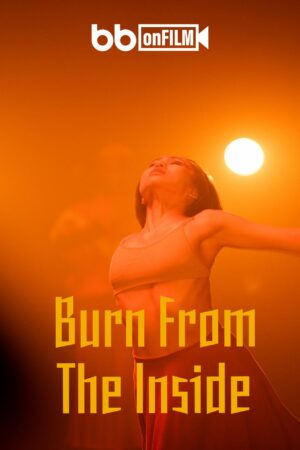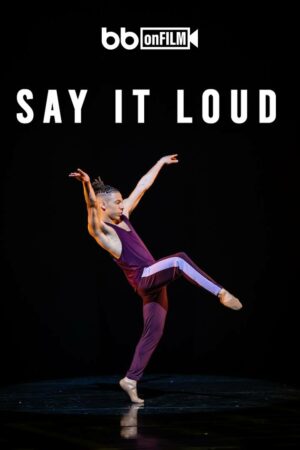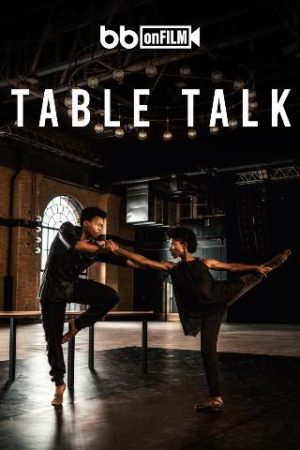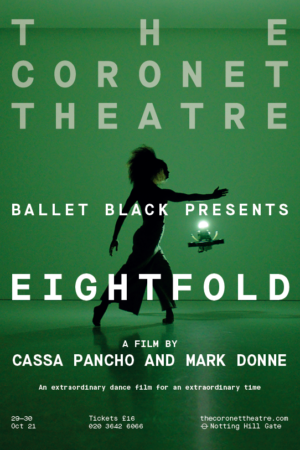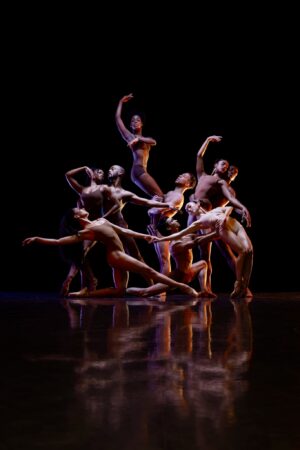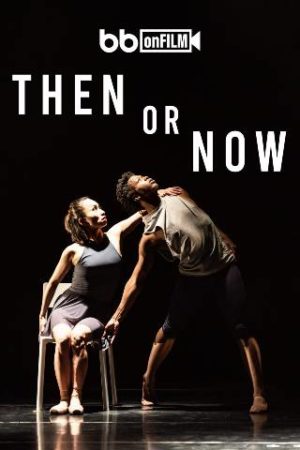Films
The profound question arises: why do certain things compel us to jump up and dance, while others make us want to sit back and do the opposite? The most significant realisation in this exploration is that from the very beginning, we were destined to be moved by sounds.
Consider the musicality present in the way we speak. Every language has its own unique cadence and rhythm. For instance, the Khoi people of South Africa employ clicking sounds in their speech, creating a rhythmic quality. Even before externalising it, our own bodies possess inherent musicality. We can observe this in the heartbeat and even in the rhythm of our walking. These natural rhythms can transform into music, affirming that our inclination to move has been woven into the fabric of our existence since the dawn of creation.
Reflecting on personal experiences, a childhood memory emerges from the Eastern Cape. Gathered inside a hut, family members would chant while a fire crackled in the sand. The ambiance created by this ritualistic chanting became a favourite lullaby, transporting the young narrator to a state of pure tranquility. In that space, devoid of pain, sadness, or happiness, they found a place of profound stillness. The intention was to preserve the sense of communal togetherness experienced around the fire, a shared moment of deep connection.
In creating "Burn from the Inside" Mthuthuzeli sought to capture this communal feeling through the film's unique approach. By immersing oneself in the collective experience, viewers have the opportunity to delve into individual journeys and explore the expansiveness of the depicted space. The film aims to evoke a trance-like state, reminiscent of the personal experiences of the creator. The focus shifts from visual imagery to capturing the essence of being in a trance. It becomes an exploration of what it feels like to exist in a space where time and space lose their boundaries, and the driving beat becomes the guiding force. In this boundless expanse, one may question the vastness or confinement of their surroundings and the proximity of others. Solos are portrayed with individuals appearing distant yet close, creating an otherworldly sensation of unity while simultaneously keeping a distance.
The concept of being grounded on Earth while simultaneously transcending it becomes a central theme. It mirrors the imagined realm of an ancestral plane or a space between reality and the afterlife. If one were to encounter their ancestors, it is envisioned as a place that is unfamiliar, yet still connected to Earth. This in-between world, neither fully alive nor dead, allows communication with one's ancestors. Such a trance-like state embodies a similar feeling—a sense of being aware of one's earthly existence while simultaneously occupying a realm that defies explanation. Despite feeling the ground beneath their feet, the soil and dust, and hearing their breathing, there exists a profound sense of existing in an entirely different dimension.
About The Music
In his exploration of music, Mthuthuzeli drew inspiration from African dance, recognising the profound impact of percussion and voice in transporting people beyond their ordinary experiences. This ignited his aspiration to create music that could elevate listeners to a different realm, where they could immerse themselves in the rhythm and transcend the boundaries of their surroundings. The essence of this transformative experience lay in the rhythmic breathing and pulsating heartbeat, evoking something deeply personal yet universally shared. Moreover, Mthuthuzeli found inspiration in the communal nature of music, symbolised by gathering around a fire, where stories and melodies were shared. Despite the individual interpretations of the sounds, all participants were transported to a place beyond themselves, blending their unique experiences with a sense of unity and belonging.
Throughout the creative process, Mthuthuzeli realised the pivotal interplay between making music in real-time and responding to it. This symbiotic relationship became integral as the music guided the dancers, while simultaneously being influenced by their movements. Initially, the music was mere potential, with only the tempo and a few sounds providing a foundation for the choreography. In a dynamic and evolving exchange, the dance began to shape the music, blurring the boundaries between the two art forms.
Taking a step back from the project enabled Mthuthuzeli to grasp the unique narratives conveyed by the dancers. It became a captivating exploration of how the music could enrich and harmonise with their stories. In this transformative process, the dance seamlessly intertwined with the music, resulting in a profound fusion where the music adapted organically to the dancers' expressions and movements. The artistic collaboration transcended individual roles, creating a powerful and unified experience where the boundaries between dance and music dissolved, giving rise to a harmonious relationship.
the idea… In the wake of the most recent Black Lives Matter movement, I wondered how Ballet Black should react to the apparent shift in global thinking about race, inclusion and equity. My overriding feeling was one of exhaustion; micro aggressions, persecution, death – it seemed never ending. I wanted to see the passionate, joyful aspects of our diverse existence brought to the fore, not just the tragic. Blackness it is not a singular experience: we do not all share the same background, beliefs, trauma or skin colour. I felt compelled to respond by showcasing the multifaceted aspects of joyous human emotion, and also the artistic power of Ballet Black, an organisation that has been championing positive change for Black and Asian dancers for twenty years.
How could we respond safely and creatively in the midst of the coronavirus? I made a wish-list of eight choreographers from around the world and chose a theme for each of them: joy, courage, love, passion, hope, rage, strength and power. I paired each choreographer with the Ballet Black dancer I thought would best respond to the challenge each theme presented. Thanks to the miracle of video conferencing software, we were able to create these ballets via a screen from South Africa, Leeds, New York, Berlin, Paris, Amsterdam, and London. The final challenge was to create a piece of dance art that wasn’t simply dance filmed in the usual theatre set-up. I enlisted the talents of film maker, Mark Donne, to bring these hugely diverse artists and themes together, under his exceptional eye. Mark not only agreed, but gave us the title, Eightfold. I called on our wider BB family and asked the incredible writer, Natasha Gordon (Nine Night) and our Patron Thandiwe Newton, to create short narration to link the films together. Together, we have created an extraordinary piece of art in an extraordinary time - Cassa Pancho
Film Directors Note
Traditionally, ballet has a very limited and fixed relationship with film; invariably being performed and recorded in standard, theatrical formats. The first complete transgression and transcendence of this convention is now marked by, Eightfold.
A collision and in a sense, vivid dialogue between cinema and ballet, this conceptualised suite of work is comprised of eight newly choreographed pieces, each performed within a corresponding atmospheric moment, on a symbolic 24 hour “psychological clock”.
Expansive and radical use of light and film technology – including the most sophisticated cinematic rigs and FPV drones deployed as both camera and light source by Bridgerton Director of Photography, Mark Nutkins – render an unprecedented dance experience, where each dancer is introduced by a symbol or glyph, allowing the unadulterated transmission of absolute performance, state, emotion, and deep fusion with the medium of film.
This project is unprecedented in its approach and dimensions, and will, in all probability, radicalise and inspire the relationship between ballet and film forever. - Mark Donne, Film Director
Choreography: William Tuckett
Lighting Design: David Plater
Costume Design: Yukiko Tsukamoto
Poetry: Adrienne Rich (1929-2012)
Director of Poetry: Fiona L Bennett
Poetry recordings: Hafsah Bashir, Natasha Gordon & Michael Shaeffer
Is it necessary for me to write obliquely about the situation? Is that what you would have me do?
Then Or Now, poetry by Adrienne Rich
Dark Fields of the Republic, Poems: 1991-1995
We are living through times where every action we take - responding to a call to arms, deciding to remain passive - has become a political act. Small or large, personal or public, our actions seem to hold more weight than before. Creating work for Ballet Black in this climate felt very different to previous collaborations; still exciting, but with great responsibility. Whose story should the dancers be telling in a time of such political and social change?
Having worked with poetry as a ‘spoken score’ for a while, I asked Fiona’s help in finding a poet whose work spoke to this narrative conundrum. On reading Adrienne Rich’s Dark Fields of The Republic, I was (and remain), overwhelmed by her ability to call the reader to action; her rejection of apathy, injustice and oppression; her reasoning that love is all – be it romantic, social or political. Specific yet open, Rich provides space for both the reader and the dancer.
In parallel, I had been listening to Daniel’s recording of the Von Biber Passacaglia, and thinking its ‘slippy’ structure, which makes it feel in the moment and improvised, would be wonderful to create to. Daniel later revealed that Biber did indeed intend the player to be actively involved in the piece; to improvise and bring themselves to it as an artist.
Finally, combining the poems, Daniel, and the voices of Natasha, Hafsah and Michael, our sound engineer Ian created a structure and soundtrack, that enabled me to make this piece with Yuki and David.
I remain immensely grateful to this hugely creative, creative team, Ballet Black, and particularly the Adrienne Rich Estate for their wholehearted support of this project.
Will Tuckett
From the Director of Poetry
We go to poetry because we believe it has something to do with us. We also go to poetry to experience the not me, enter a field of vision we could not otherwise apprehend… Someone writing a poem believes in, depends on, a delicate vibrating range of difference, that an ‘I’ can become a ‘we’ without extinguishing others, that a partly common language exists to which strangers can bring their own heartbeat, memories, images. A language that itself has learned from the heartbeat, memories, images of strangers.
Adrienne Rich, from What is Found There, Notebooks On Poetry And Politics, 1994
Adrienne Rich is one of the greatest modern poets of our time. She was born in Baltimore USA in May 1929 and during her lifetime published over 20 volumes of poetry and 8 books of non-fiction prose. A scholar, activist and a writer whose work established new forms, she received numerous awards, fellowships and prizes including The National Book Award and The Lannan Foundation Lifetime Achievement Award. She was a tireless activist and ambassador for human rights olarly and artistic integrity make her a highly relevant and vital source of inspiration for our time. She died in 2012 and her legacy is a defining force in the ongoing development of poetry.
When Will invited me to suggest poetry for a new piece with Ballet Black to explore ideas of belonging and home we began looking for poems that would serve this theme and that would also offer an exciting balance of sound, image and story through which to create. We considered the works of many poets, past and present, and exchanged poems over a number of weeks. When I sent Will, What Kind of Times Are These? the opening poem from Dark Fields of the Republic, the question in this title and the sequence of poems as a whole, resonated so strongly with us that we knew we had found our source. As Will began work with the dancers and the collaboration between music, poetry and dance began, these astonishing poems, with their unique balance of tender intimacy and epic provocation, guided, challenged and inspired us all.
Dark Fields of the Republic is published by W. W. Norton and is available to purchase at www.wwnorton.co.uk. You can find out more about the life and work of Adrienne Rich through the Adrienne Rich Literary Trust: adriennerich.net
Fiona L Bennett Director of Poetry, Then Or Now.
It is so incredible to have this opportunity to make my second touring work for Ballet Black. This year’s piece took a couple of different turns to get to where it is today, as the subject got quite complicated and created many challenges. Which was, for me, very exciting. The Waiting Game is inspired by one of the key figures of Theatre of the Absurd, Samuel Beckett. It explores the Absurdism of existence and the passing of the time through movement. The uncertainty of what tomorrow will bring; how thoughts can change rapidly, confusing us. Is life just a big simulation? A game? Do we know the rules, or are we all searching for purpose? If life is a game, are we players or spectators? Is time just a constant reminder that there will be a tomorrow?
This concept is fascinating to me as an artist, and I really wanted to find a way to bring this idea to life. I decided to take on the challenge of creating an original score for the first movement of the piece. The process of creating this element of the ballet really helped me to understand what I was trying to achieve choreographically. I am by no means a composer or a musician, but I loved the idea of what this additional layer could bring to the way I work. Music is such a strong driving force in dance, and I have enjoyed knowing that I had room to play around with the sound. Using the dancers’ voices as part of the music is always my favourite thing, and I really wanted to expand on that idea. This year I collaborated with Nathalie Vijver, who was my drama teacher when I attended the Cape Town Academy of Performing Arts. Working with Nathalie gave me so much clarity on the themes of Absurdism, drama, writing and staging a theatrical work like The Waiting Game. The title of the piece on its own is quite interesting to me, in the sense that a person can find themselves in a situation where everything is presented to them, but they can choose to make their move at a later stage. This title led us to write a piece that is both complex yet simple, deep, confusing and fun. It’s about the exploration of the scrambling of thoughts that sometimes don’t lead us anywhere, when all the while, time continues to pass us by.
The Ballet Black team and I spent a lot of time trying to figure out how this would be best communicated through movement and dance. The most amazing thing about being both a dancer and choreographer in the Company is the constant communication we are able to have, and the idea of building something much greater than ourselves. Thank you to Cassa and the dancers for creating this work with me. I am very happy to share it with you.
Mthuthuzeli November

